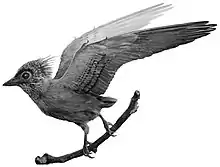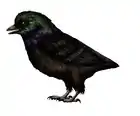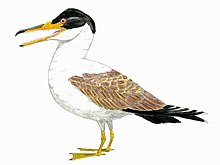| Neogaeornis Temporal range: Maastrichtian ~ | |
|---|---|
| Scientific classification | |
| Domain: | Eukaryota |
| Kingdom: | Animalia |
| Phylum: | Chordata |
| Clade: | Dinosauria |
| Clade: | Saurischia |
| Clade: | Theropoda |
| Clade: | Avialae |
| Order: | †Vegaviiformes |
| Family: | †Vegaviidae |
| Genus: | †Neogaeornis Lambrecht 1929 [1] |
| Species: | †N. wetzeli |
| Binomial name | |
| †Neogaeornis wetzeli Lambrecht 1929 | |
| Synonyms | |
| |
Neogaeornis is a controversial prehistoric genus of diving bird. The single known species, Neogaeornis wetzeli, was described from fossils found in the Campanian to Maastrichtian Quiriquina Formation of Chile. It lived about 70-67 million years ago. It remains known from the single tarsometatarsus described in 1929 by Lambrecht, and today housed in the Paläontologisches Institut und Museum in Kiel, Germany.[2]
Taxonomy
It is controversial because of its uncertain placement. While clearly related to modern birds, N. wetzeli might not be a particularly close relative, but rather belong to the Baptornithidae, a member of the flightless and toothed Hesperornithes. If this is so, Neogaeornis is among the very youngest records of this lineage, and the first one from the Southern Hemisphere. However, the Hesperornithiformes are known to have been birds of the open epicontinental and shelf seas which avoided the outer oceans as surrounded South America at that time. And though apparently somewhat migratory, they are only known from temperate to warm subtropical climates, and it seems that towards the end of the Cretaceous their range shifted polewards.[2]
Others consider it a close relative of certain modern birds, such as the Gaviiformes (loons/divers). Both theories are problematic, as neither group is known from the Southern Hemisphere. The even more controversial supposed loon ancestor Polarornis from Seymour Island, Antarctica presents a similar dilemma and Neogaeornis and there is little consensus about the age of Polarornis, and so all that can be said is that Polarornis and Neogaeornis were similarly sized birds with similar lifestyles.[2][3]
N. wetzeli may also be the ancestor to the grebes or Podicipediformes.[4]
Most recent phylogenetic studies seem to favour its position as a basal loon.[5] Alongside Polarornis and some yet unnamed Antarctic specimens, it seems to suggest a Gondwanan origin for this group. In 2017 a phylogenetic study Agnolín and colleagues have found Neogaeornis to be stem-anseriforms along with Polarornis, Australornis and Vegavis in the family Vegaviidae.[6]
References
- ↑ Brands, S. (2012)
- 1 2 3 Chiappe (1991)
- ↑ Mayr (2004)
- ↑ Encyclopædia Britannica (2012)
- ↑ Carolina Acosta Hospitaleche, Javier N. Gelfo, New Antarctic findings of Upper Cretaceous and lower Eocene loons (Aves: Gaviiformes), Annales de Paléontologie Volume 101, Issue 4, October–December 2015, Pages 315–324
- ↑ Agnolín, F.L.; Egli, F.B.; Chatterjee, S.; Marsà, J.A.G (2017). "Vegaviidae, a new clade of southern diving birds that survived the K/T boundary". The Science of Nature. 104 (87): 87. Bibcode:2017SciNa.104...87A. doi:10.1007/s00114-017-1508-y. PMID 28988276. S2CID 253640553.
Bibliography
- Brands, Sheila (7 Apr 2012). "Scientific name: Neogaeornis*". Project: The Taxonomicon. Retrieved 12 Jun 2012.
- Chiappe, Luis M (1991). "Cretaceous birds of Latin America". Cretaceous Research. 12 (1): 55–63. Bibcode:1991CrRes..12...55C. doi:10.1016/0195-6671(91)90027-A.
- Encyclopædia Britannica (2012). "grebe". Encyclopædia Britannica Online. Encyclopædia Britannica Inc. Retrieved 13 Jun 2012.
- Mayr, Gerald (2004). "A partial skeleton of a new fossil loon (Aves, Gaviiformes) from the early Oligocene of Germany with preserved stomach content" (PDF). Journal of Ornithology. 145 (4): 281–286. doi:10.1007/s10336-004-0050-9. S2CID 1070943. Archived from the original (PDF) on 2015-09-24. Retrieved 2008-07-28.
Further reading
- Lambrecht, K. (1929). "Neogaeornis wetzeli n. g. n. sp., der reste Kreidevogel der südlichen Hemispäre". Paläontol. Z. 11 (2): 121–129. doi:10.1007/BF03041591. S2CID 128492695.
- Mortimer, Michael (2004). "The Theropod Database". Phylogeny of taxa. Archived from the original on 16 May 2013. Retrieved 2 Mar 2013.
- Slack, K.E.; Jones, C.M.; Ando, T.; Harrison, G.L.; Fordyce, R.E.; Arnason, U.; Penny, D. (2006). "Early Penguin Fossils, plus Mitochondrial Genomes, Calibrate Avian Evolution". Molecular Biology and Evolution. 23 (6): 1144–1155. doi:10.1093/molbev/msj124. PMID 16533822.

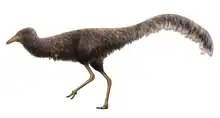

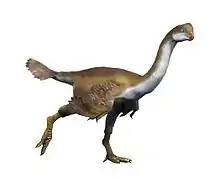
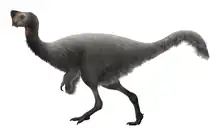



.png.webp)


.jpg.webp)
